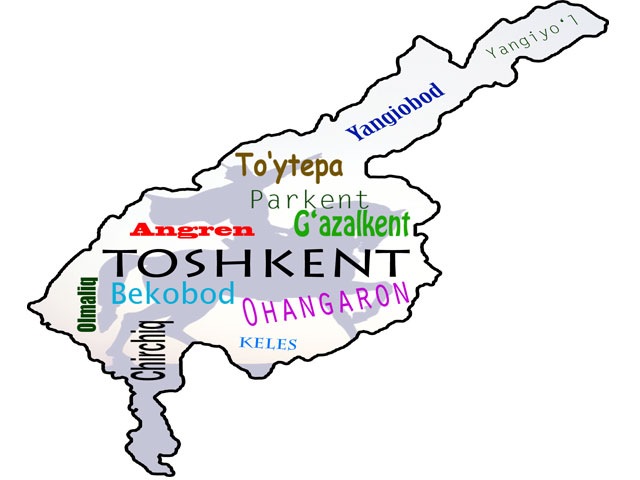From ancient times, Tashkent has been playing an important role in Central Asia and has been the leading center of the Great Silk Road linking east to west, north to south. The city used to be famous in the east and west for its scientists, architects and poets.
Historical facts point out that the city was founded in the 2nd century AD. In this period the city was the Chach residence, which was the Tashkent oasis. In the territory of the modem city, and the city had become part of the khaganate under the name Chach. In the first part of the 8th century Chach had undergone devastating conquest of the Arabian warriors. However the city called Binket by Arabian historical records had recovered and began to develop rapidly. In the 10th-12th centuries as the result of the city conquest by the Karakhaninds, Tashkent was becoming the city’s name.
In the 12th century, during the period of Mongolian invasion Tashkent had been going through a stage of recession, but during the period of Mongolian rule Tashkent had turned into a big and crowded city. In the 14,h—15lh centuries, in the period of Amir Timur’s and the Timurids Dynasty’s rule, the city regained its strategic position by means of a strong fortress and its territory was expanding. Various types of manufacture, trade and culture were being developed. In the second half of the 16th century Tashkent had joined Bukhara khanate and in the beginning of the 19th century was taken over by khan of Kokand.
After Tsar Russia’s incursion into Central Asia in the 19"’ century, Tashkent became the main city of Turkistan general-governance. From the Is1 of September, 1991 Tashkent became the capital of the Independent Republic of Uzbekistan and the center of Tashkent region.
Indeed, Tashkent had gone through many triumphs and tragedies. Despite all our contemporary world which includes past and present, numerous constructions, rearrangements, and varying architectural approaches has turned Tashkent into a unique example of a Central Asian cosmopolitan city. Nowadays, being the biggest city in terms of population in Central Asia, Tashkent is the center of the city agglomerate as well as an important aviation, railroad and automobile destination. It is the political, economic, cultural and scientific center of Uzbekistan.
On the general conference of UNESCO in 2009, it was decided to celebrate the 2200th anniversary of Tashkent city, a huge historical and cultural center and a modern symbol of peace and friendship.






















